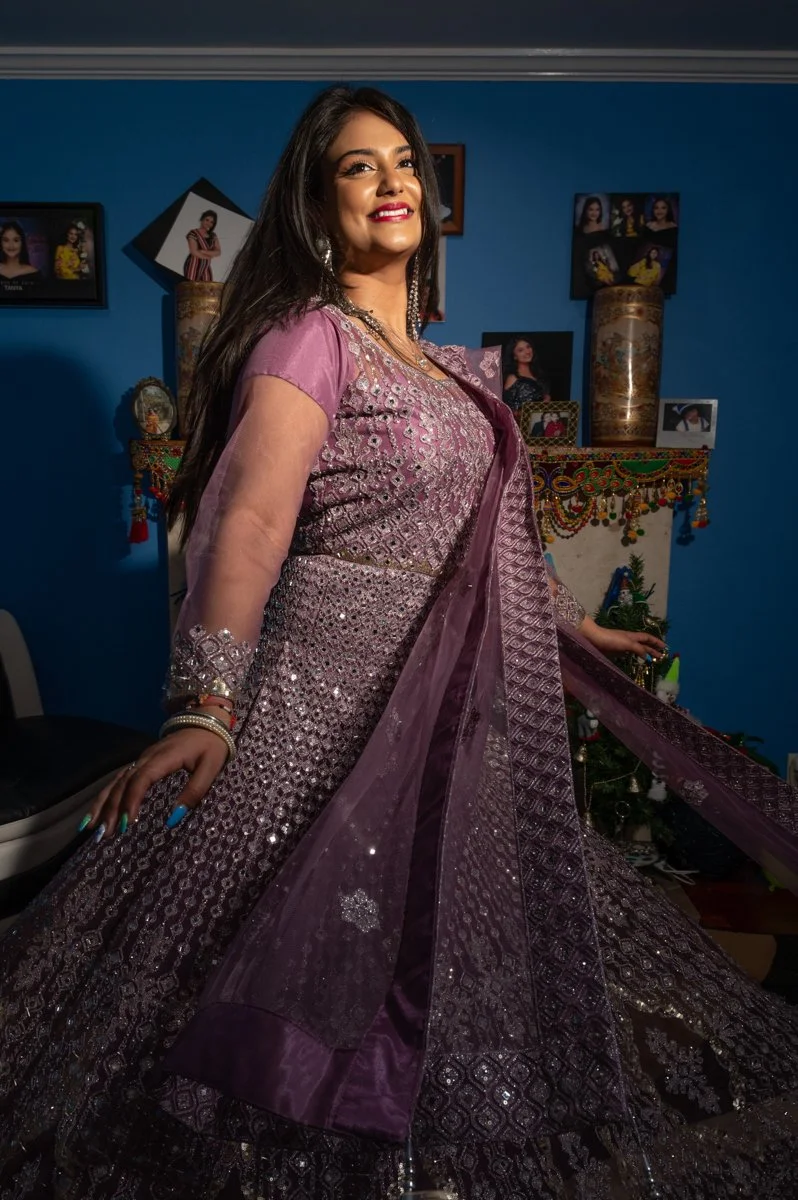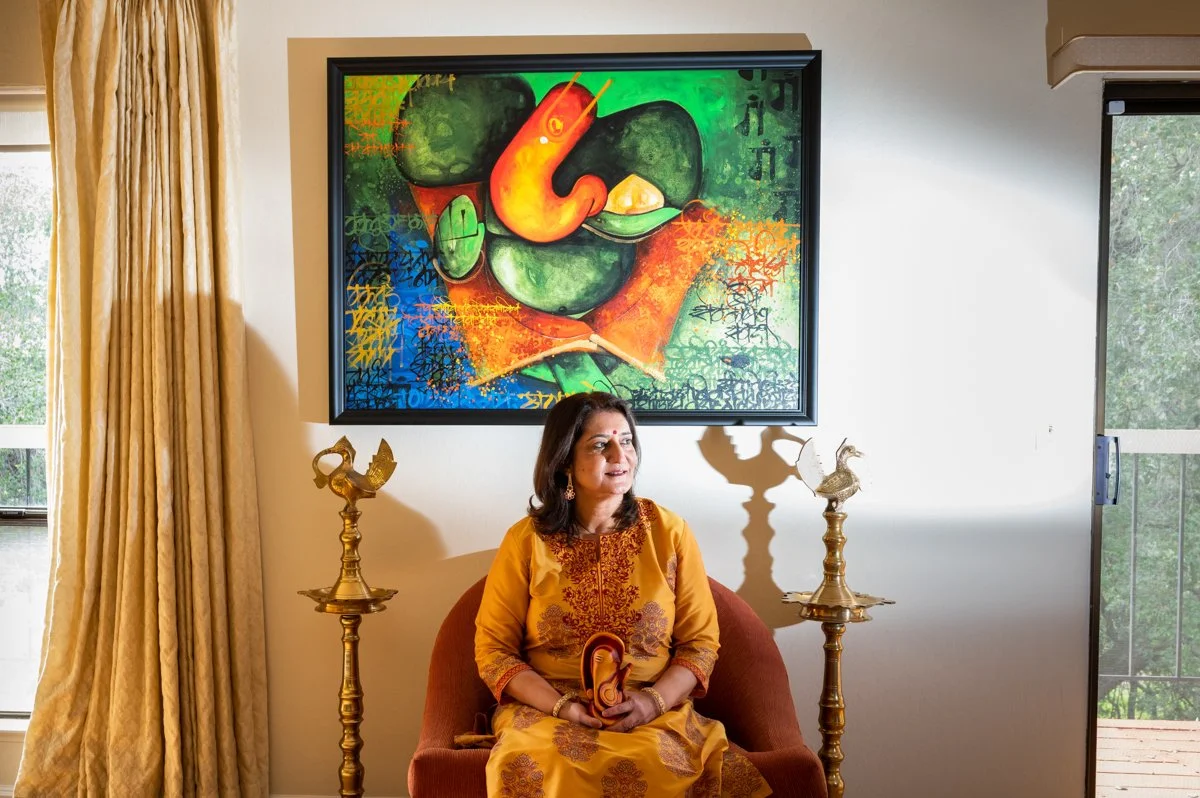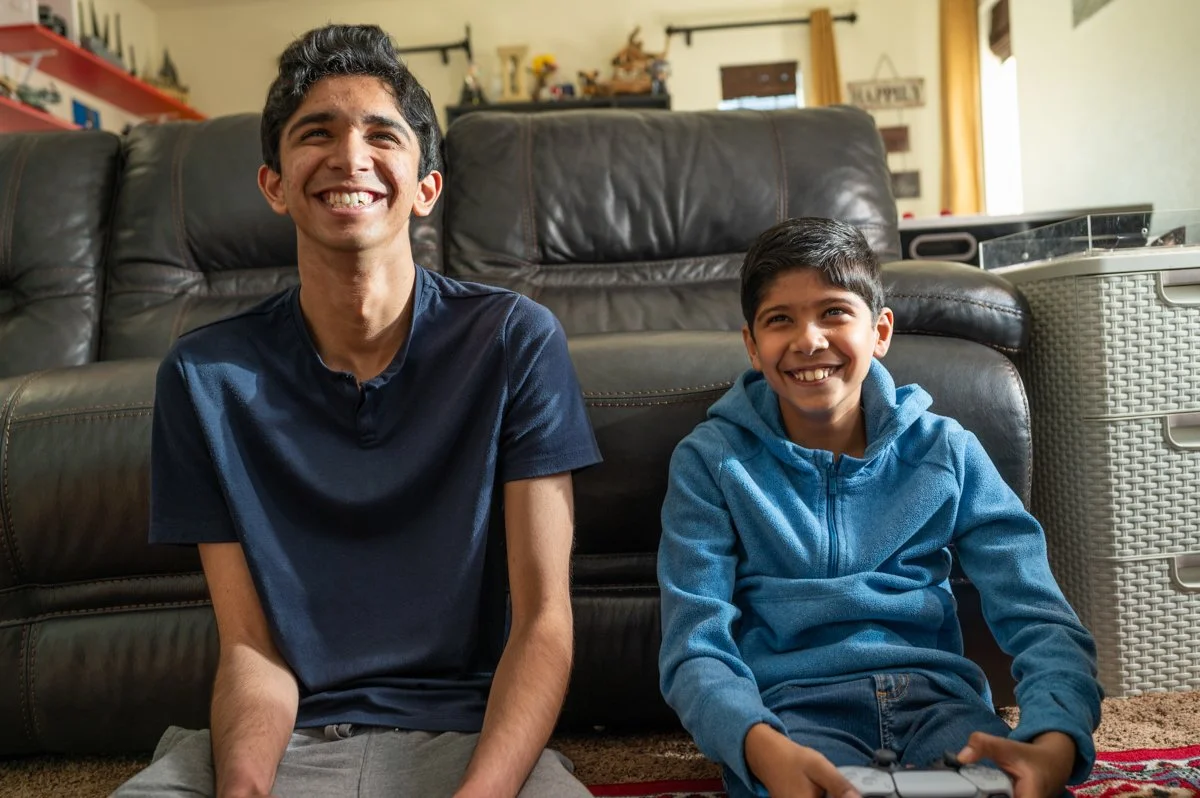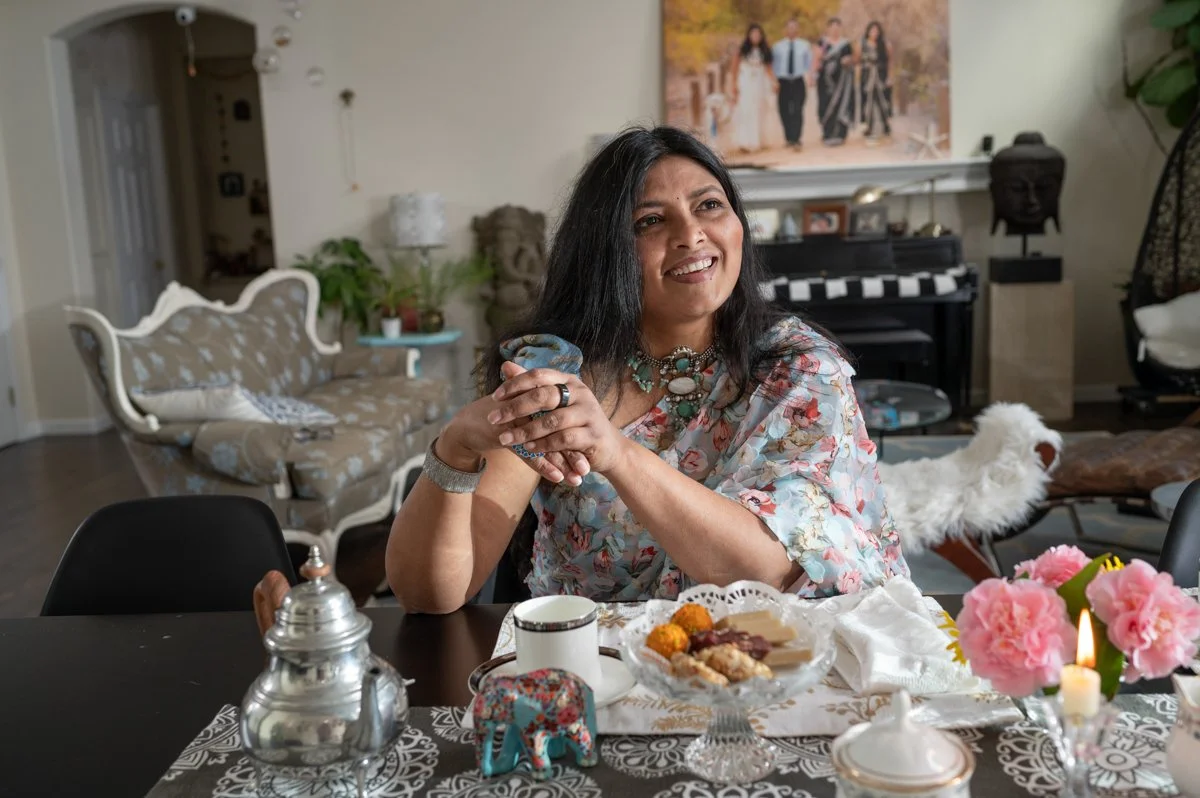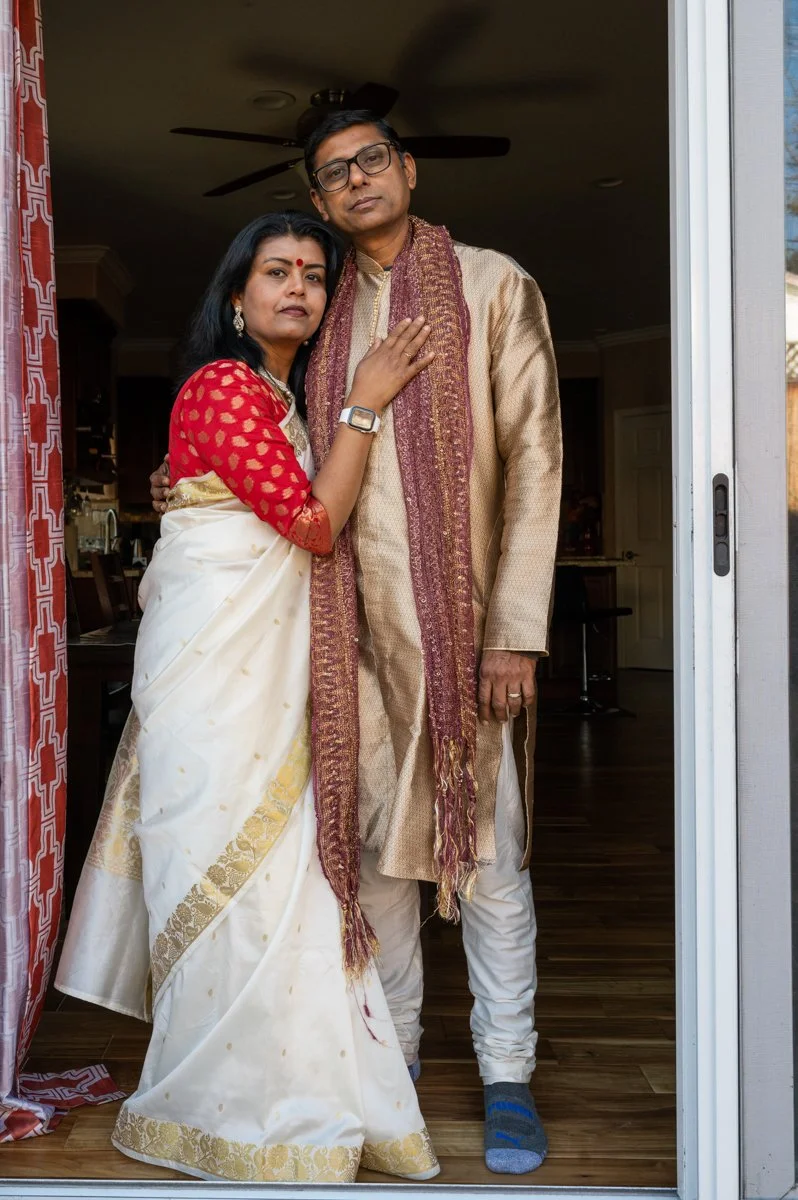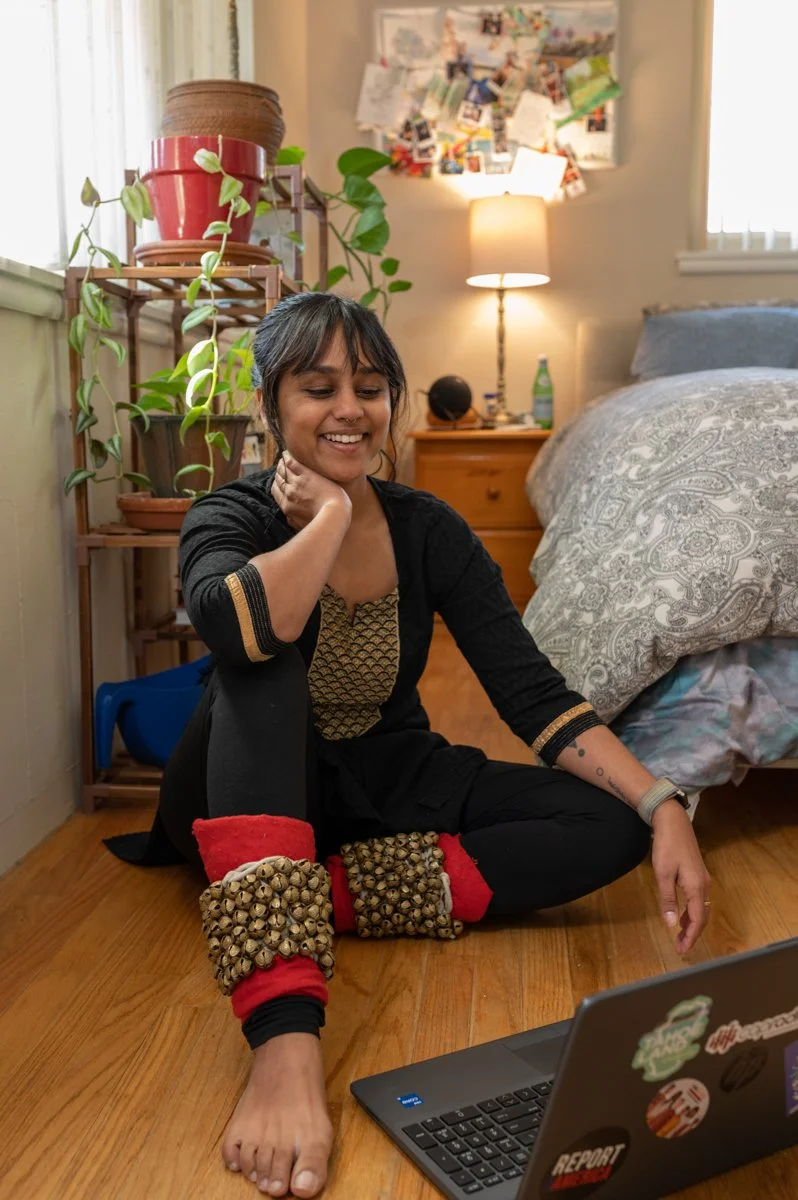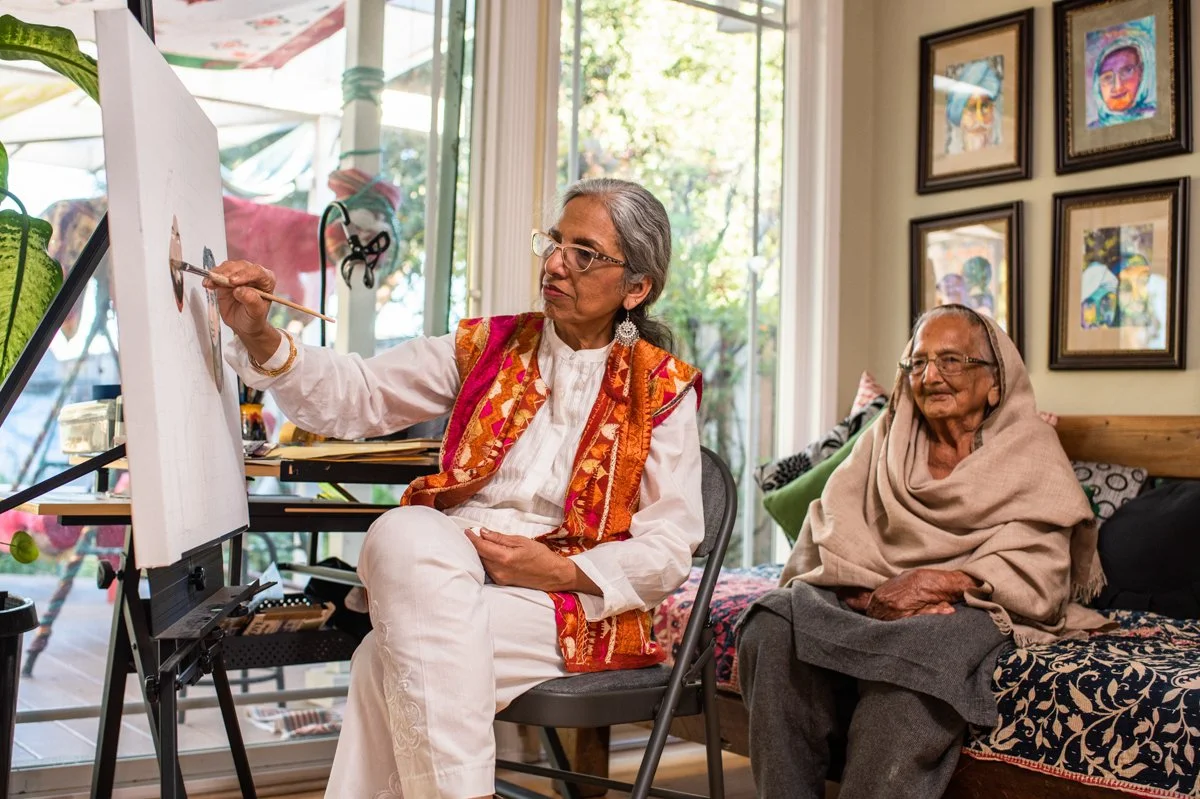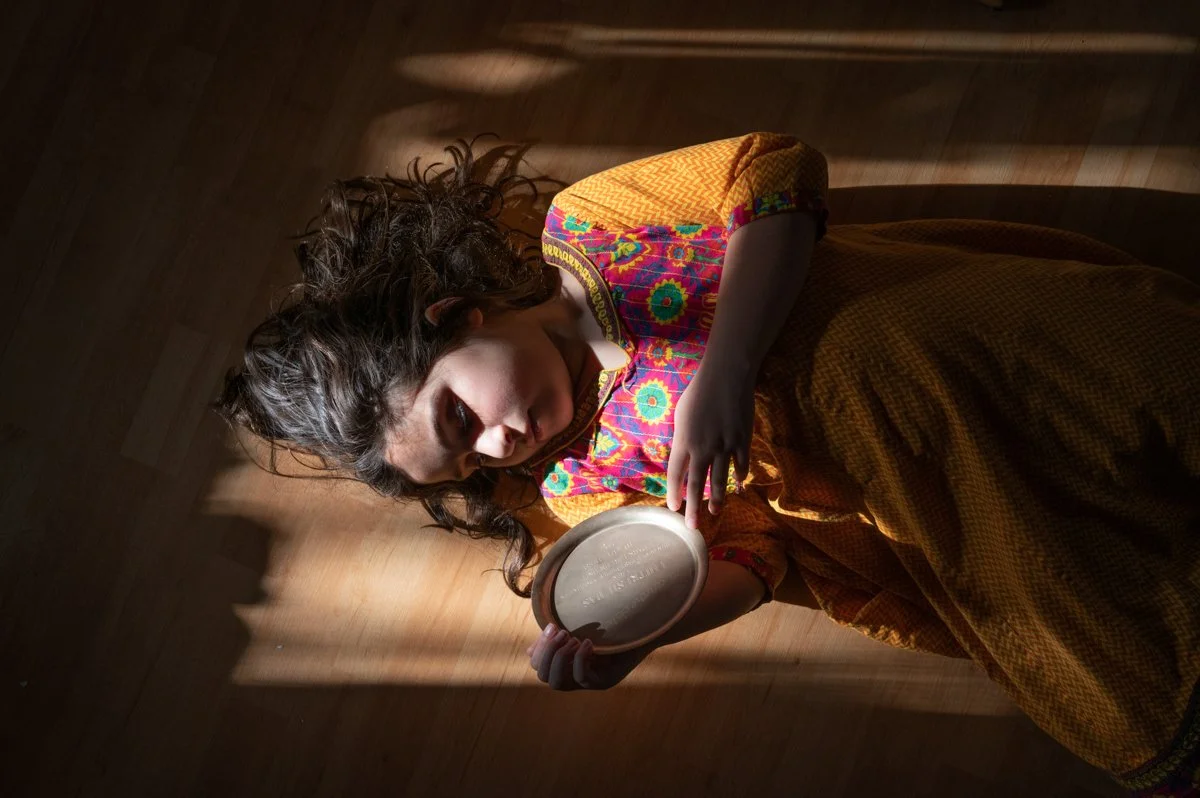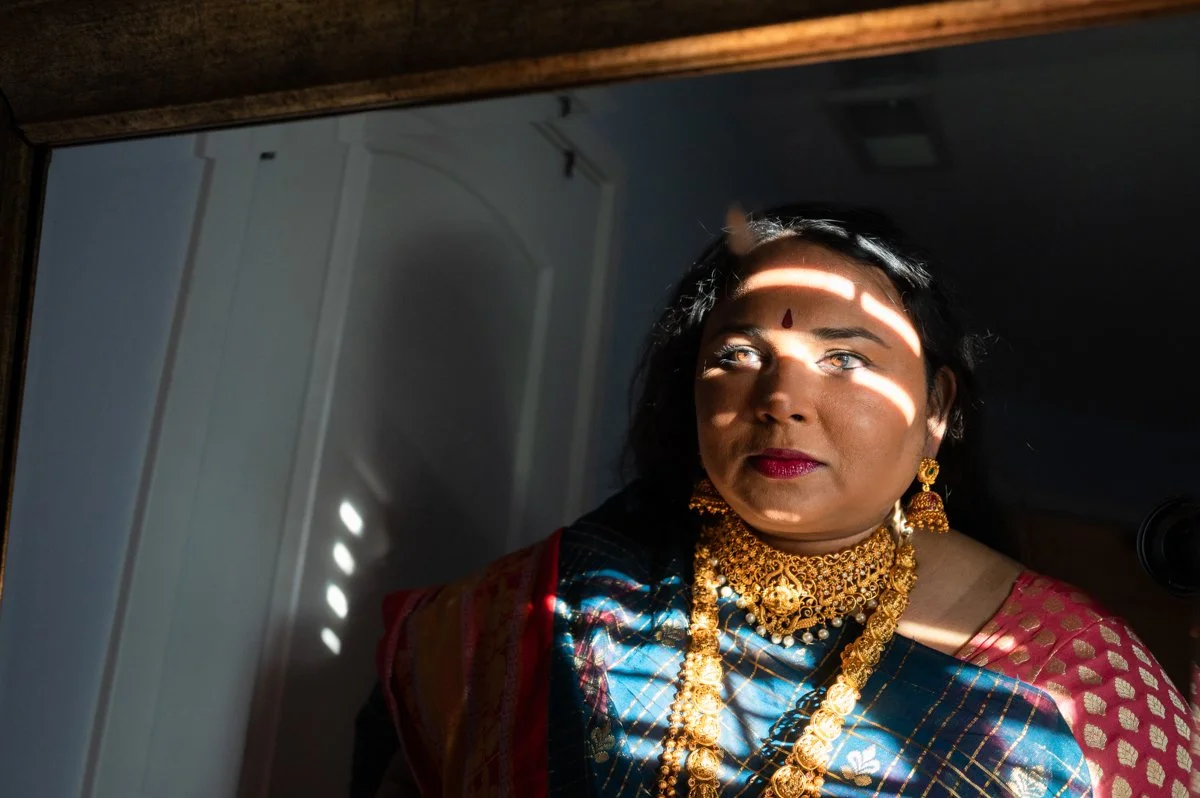We Belong : bay area indians connect to heritage
“We Belong” is a visual exploration highlighting the different experiences of South Asian identity. The SF Bay Area is often referred to as a salad bowl when it comes to how immigrants and the children of immigrants engage and interact with American culture and society. Which parts of our cultural identity we keep and which parts we shed is not only a constant conversation topic but also a daily negotiation. “We Belong” explores that dynamic through portraits and interviews with Bay Area South Asians.
Photographs and interviews were made in 2023 by CatchLight Local Fellow Sree Sripathy.. This series was produced by India Currents Magazine and was originally published by the magazine in collaboration with CatchLight as part of the CatchLight Local Visual Desk. To see the complete story for each portrait, visit India Currents: We Belong.
Manjula and Viggy Mokkarala stand in their Los Altos Hills backyard vineyard amongst their Pinot Noir vines. The family makes their own wine, their first vintage produced in 2012, and gifts it to friends and family. “I’ve traveled to dozens of countries. Very quickly, I realized that the diversity of India is unmatched. So many languages, so many religions, so many local customs and practices. And yet the country is just held very tightly together. So those kinds of things you look at and you admire more and more as you travel around the world.” – Viggy Mokkarala
Tanya Gupta dances to Bollywood music in her Fremont home. Tanya was born and raised in the Bay Area and is a recent college graduate in Computer Science. She often anchors and reports for Sitaarre TV and loves singing Bollywood music. “I was lucky enough to be raised in a way where my parents never forced the Indian culture on me. I got to choose what I wanted to see in the Indian culture and, what I got to take from the Western culture. I never felt conflicted.” – Tanya Gupta
Sarang Bhatt, a queer Gujurati Hindu, sits in his San Francisco apartment next to a large photo of Lord Krishna, his favorite deity. “Religion I carry with me all the time. There may not be an active discussion or understanding of what queerness is and what it could mean, in a contemporary setting amongst Hindus, but at least in my spiritual community, there isn’t a predefined denigration of it.” – Sarang Bhatt
Pragati Grover came to the US, newly married with just two suitcases and a Ganesh statue from her mother. She not only learned how to cook, drive and fall in love with Oprah Winfrey and soap operas, but also developed a deeper love for Ganesh, the remover of all obstacles. “I like all kinds of Ganesh. I don’t mind a dancing Ganesh. I don’t mind a Ganesh who’s playing the drums or whatever. What form Ganesh takes doesn’t matter. I think of Ganesh as my friend.” – Pragati Grover
After her experiences with religion and ritual in India, Sumiti Mehta and husband consciously raised their sons Akshaj and Atiksh (seen here playing video games) in a more secular and non ritualistic environment. “When we are not able to get across to Atiksh, the younger one, we often ask Akshaj’s help because he’s able to talk to him and make him understand. Atiksh always listens to Askhaj. So that is one good thing and I hope it remains.” – Sumiti Mehta
Shalini Chandra moved to Minnesota after marriage, eventually ending up in Sacramento with her family. She created a network of friends by inviting neighbors and local community members to her home for tea parties, introducing them to saree fashion and Indian culture. “This was the first time that I invited them into my life. And it kind of opened a window that to belong, I need to share, I need to bring them into my life for me to belong to them. And those were some of the relationships that I still treasure. They taught me so much. American thinking is very different from how an Indian thinks. And that kind of shaped everything.” – Shalini Chandra
Anshoo Tikoo Zutshi (center) sits in her living room with sister Esha (left) and daughter Ariana (right) in her San Ramon home. Both mother and daughter are wearing outfits featuring traditional Kashmiri embroidery. “I am a Kashmiri folk singer. So I continue to volunteer at all our events where I perform these folk songs so that they are not forgotten. We are a minority community. And sadly, I might be the only folk singer here in all of, not just California, but the United States.” – Anshoo Tikoo Zutshi
Sudha Rajagopalan was a software engineer in India and continued that profession for over two decades after marrying and moving to the US. After being denied a promotion at work she quit her job to become a radio jockey, RJ Sudha. “Women were not being promoted and being an Indian woman was a double whammy. I thought, if you guys don’t want me want to promote me, if you don’t want to celebrate my skin color, I would rather go to a place where my skin color and my femininity is being celebrated. That‘s when I saw I told my boss, I’m done with this place. I want to go out and do something of my own.” – RJ Sudha
Paramita Bhattacharjee and husband Satadal stand together in their Fremont home. Paramita first immigrated to St. Louis, Mo. after marriage. She recalls walking on the street during her first two weeks and being honked at. It took 6 months before she was able to start adjusting slowly. “Do I feel more Indian in a saree? Absolutely. If I’m not wearing a sari, do I not feel Indian? I don’t think so. A saree makes me feel more at home because I have memories of my mom and my grandmother, and my aunts.” – Paramita Bhattacharjee
Born in India, raised in Ontario, Canada and Chicago, author Raj Oza has been through more than one immigrant experience. An arranged marriage and a few kids and grandkids later, Raj has a unique view of life in America as an Indian. “In actuality, I’m what I call an in between person. I’m just in between all these generations, and they’re very different. There aren’t too many of us, and very few have experienced life this way … For quite a few years, we had four generations living under one roof … family passes along that sense of what it means to be an Indian and an American.” – Raj Oza
Srishti Prabha uses the pronouns they/them and identifies as non-binary. Srishti sits in their room, where they normally attend virtual kathak dance class. After moving to Sacramento Srishti was unable to find a local dance community or teacher like what they had in the South Bay. Srishti has been dancing kathak since age 3. “One of the biggest things I think you get from Indian classical dance is that not only is it the dance of my ancestors, but it’s this idea of dedication to the practice of the art form.” – Srishti Prabha
Sikh artist Sarabjit Singh (left) works on a painting while her mother Darshan Kaur takes in the process at the artist’s Santa Clara home. The painting is of the artist’s parents when they were younger. Sarabjit started painting portraits of Sikh culture and her own history after 9/11. “Sometimes they [people] don’t understand out of fear. So it’s good to bring them closer, through love and through kindness. And that is the way I chose to do art, and talk about my art.” – Sarabjit Singh
Reshma Hyder is an American Muslim grandmother and entrepreneur from Saratoga. She was born and raised in the Middle East, but studied in India, where her father was from, and visited Pakistan frequently, where her mother is from. “When I took my citizenship, I said, I need to pick up one identity. I was going to be an American Muslim, with heritage from India, Pakistan, Saudi Arabia. And I will live my life as a Muslim first. It’s a blessing that I belong to India and Pakistan.” – Reshma Hyder
Tiya Mohanty, 12, lies in bed surrounded by the books she loves to read in her Sunnyvale home. Her mother, artist Pragati Sharma, says Tiya is a bit of an Indophile. Tiya reads a lot of Indian mythology books and her favorite character is little Krishna. “Krishna as a kid, he would do mischievous things. But in the end, he would save the day or help someone, or spend time in the forest with his friends.” – Tiya Mohanty
Saumya Balasubramanian draws on her bharatanatyam training and dances in her kitchen to classical Indian music while cooking lunch for her family in her Fremont home. “You spend two hours cooking and then everyone comes together for half an hour and it’s done. I think I dance because it removes the monotony of this thing but also because I have some quality time that I use for myself.” – Saumya Balasubramanian
Saadhvi Das, 10, holds a commemorative plate given to her late father, legendary kathak dancer Pandit Chitresh Das in her San Rafael home. Saadhvi learns kathak at the Chitresh Das Institute, where her mother, Celine Schein Das, is Executive Director. Saadhvi says she feels closer to her father when holding the commemorative plate. “I would like to try and dance as long as I can. And I want to learn more about my history and about India itself.” – Saadhvi Das
Natasha Kehimkar with husband Derek, children Sela and Zev and dog Roti in front of their Foster City home. Natasha comes from a family of Indian Bene Israel Jews. Her husband Derek converted to Judaism and they’ve raised both their children, originally from South Korea, in the Indian Jewish tradition. “I was the only non white kid in the whole Jewish Day School. Or that I knew of. I learned early on that I have to deal with bigotry, just like everywhere else.” -Natasha Kehimkar
Transgender rights activist Anjali Rimi looks in the mirror in her Bay Area home after dressing in a traditional saree. Anjali is president of Parivar Bay Area, the only transgender-led and focused South Asian organization in the U.S. “I don’t struggle with being trans or being my whole self, and what religion I follow and how I express my gender and wear a saree or a salwar, or ride a motorcycle in a salwar. I don’t have inhibitions.” – Anjali Rimi
Vijayalaxmi Oza, 84, stands in her downstairs prayer room in her Morgan Hill home. Vijayalaxmi immigrated with her family to the U.S. in the 1960’s and worked as the head seamstress for major department stores. She picked up multiple languages through her work as a seamstress. “When I came to Canada, I didn’t speak English at all. Then we came to Chicago and I spoke English and some Italian and some German.” – Vijayalaxmi Oza

